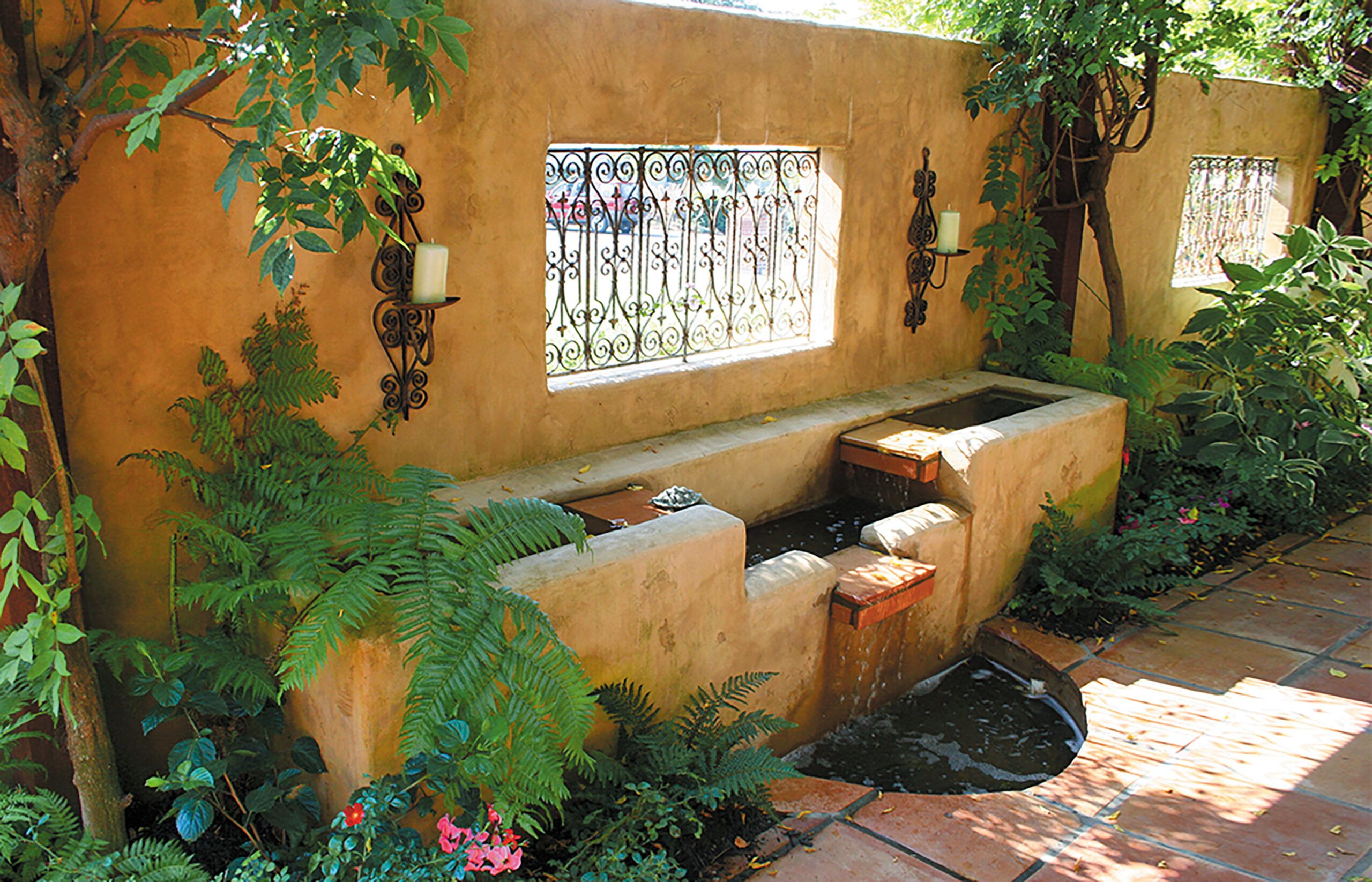Creating a private oasis in your backyard has become increasingly important as homes are built closer together. Whether you’re looking to block out nosy neighbors or simply create a more intimate atmosphere, there are numerous ways to increase privacy without sacrificing style. Below, we’ll explore 10 effective methods to add privacy to your backyard, ranging from natural solutions to structural additions.
1. Staggered Wooden Boards
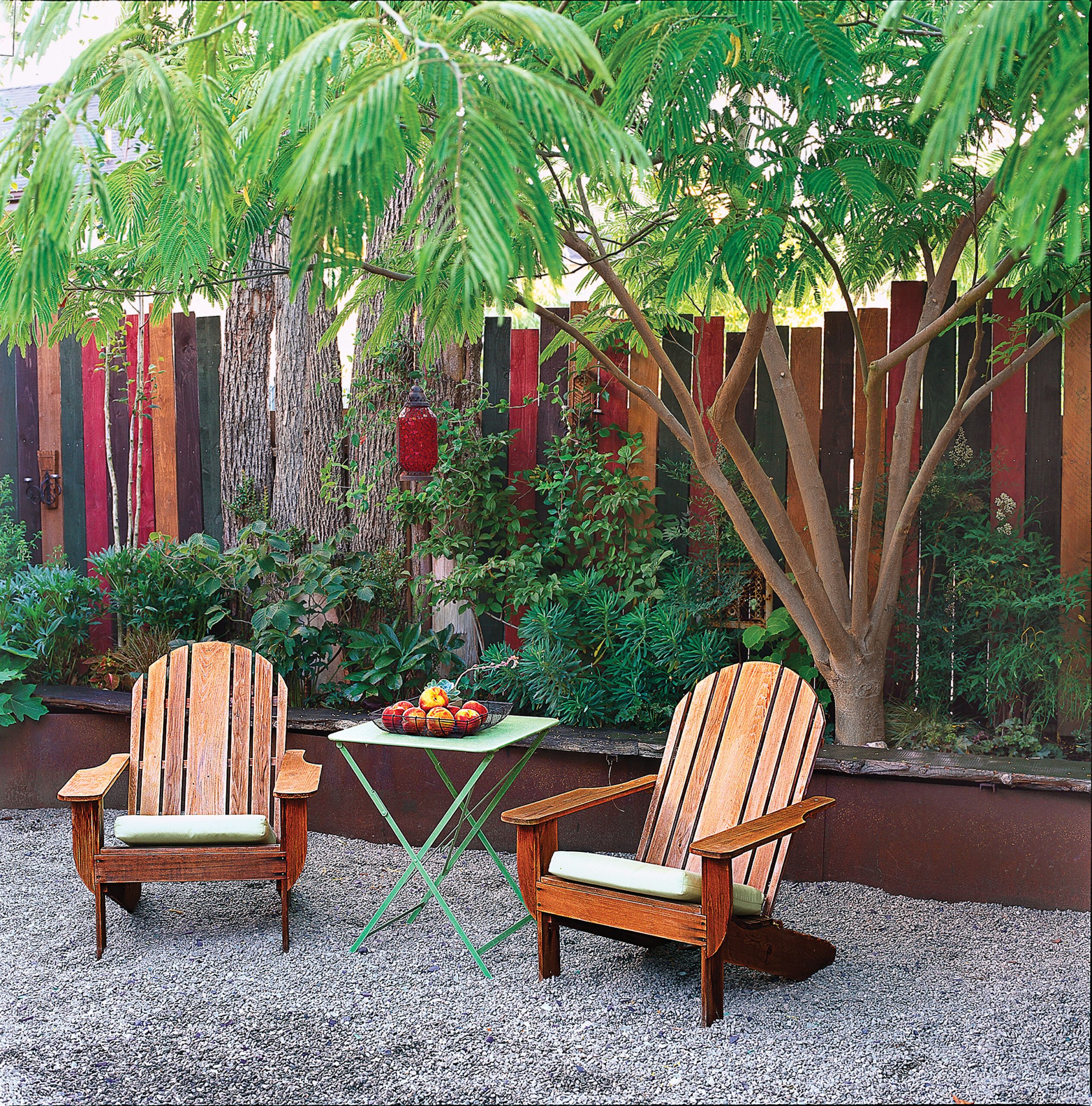
Installing wooden planks at varying heights and depths helps to create an eye-catching screen that’s both functional and decorative. You can soften the look by planting shrubs in front and allowing trees to provide a canopy overhead. To improve the visual appeal, consider staining the boards in complementary colors such as soft shades of black, yellow, green, and red.
The staggered design allows for better air circulation than a solid fence. This can be particularly beneficial in areas prone to strong winds. You can also adjust the gaps between boards to control the level of privacy and light filtration.
2. Hedges for Privacy
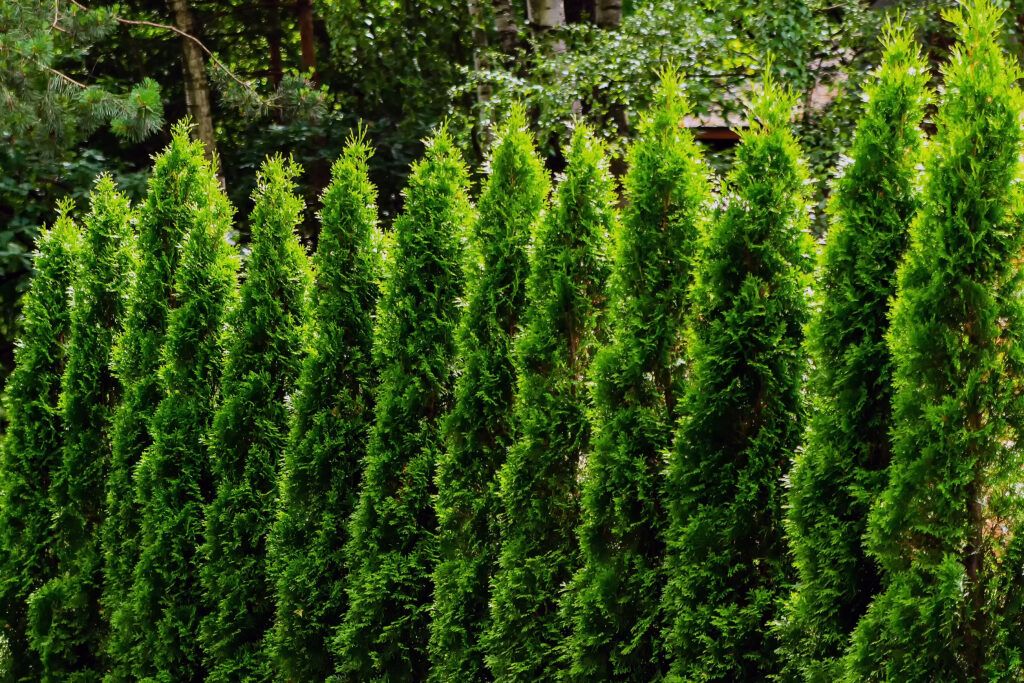
Hedges are a classic choice for creating natural privacy screens that provide year-round coverage. Unlike fences, hedges are typically not restricted by municipal height limitations, allowing you to grow them as tall as needed. Fast-growing columnar evergreens such as Italian cypress and arborvitae are excellent choices for narrow spaces such as side yards. Alternatively, a sheared privet hedge can offer a more manicured look.
To plant a new privet hedge, follow these steps:
- Create a trench two feet wide and two feet deep.
- Space individual shrubs about 12 inches apart.
- Bring soil up to the branching trunk.
- Water deeply and frequently during the first year, preferably using drip irrigation.
3. Layered Privacy Plantings
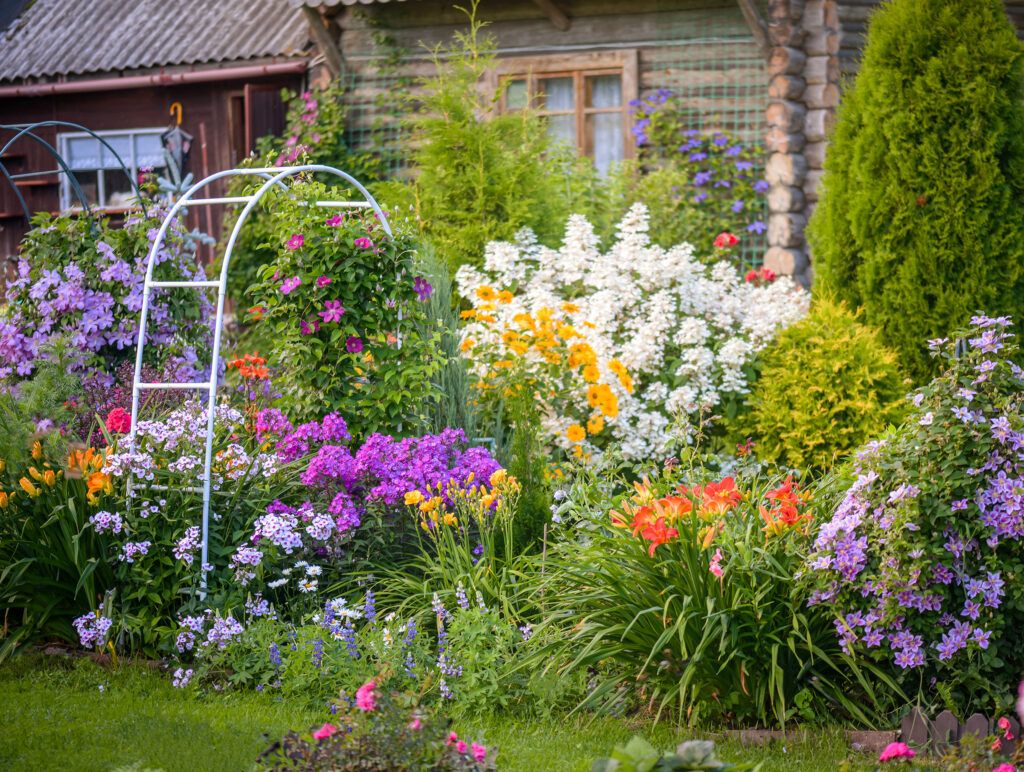
For larger yards, creating a layered planting scheme can provide a more naturalistic and diverse privacy solution. This approach combines deciduous and evergreen trees, shrubs, and perennials to create depth and visual interest. “Stagger evergreens in the background. In the foreground, step down the height with deciduous material to provide texture, depth, and color,” recommends landscape architect Elliott Brundage.
Deciduous shade trees, which typically grow 25 to 60 feet high depending on the species, can be particularly effective for blocking views from second-story windows or terraces. When positioned over a deck or patio, these trees provide privacy and shade in summer while allowing sunlight to filter through in winter.
Here are some tips for planning your layout:
- Group plants in odd numbers for a more natural look.
- Include flowering plants to attract pollinators and add color to your privacy screen.
- Incorporate plants with different textures and leaf shapes to add visual variety.
- Pay attention to the mature size of plants for proper spacing.
- Use a mix of plant types for year-round coverage and seasonal interest.
4. Container Gardens for Deck Privacy
Container gardens offer a flexible and movable solution for creating privacy on decks and patios. You can strategically place potted plants such as arborvitae or clumping bamboo to form a green screen around seating areas. For maximum versatility, choose containers with casters or made of lightweight materials so you can easily rearrange them as needed.
When designing your container garden for privacy, consider these factors:
- Choose plants that meet the amount of sunlight your deck receives.
- Implement a regular watering and fertilizing schedule to keep plants healthy.
- Make sure containers have proper drainage to prevent waterlogging.
- Rotate containers periodically for even growth and sun exposure.
- Use a high-quality potting mix suitable for container gardening.
5. Fences and Walls
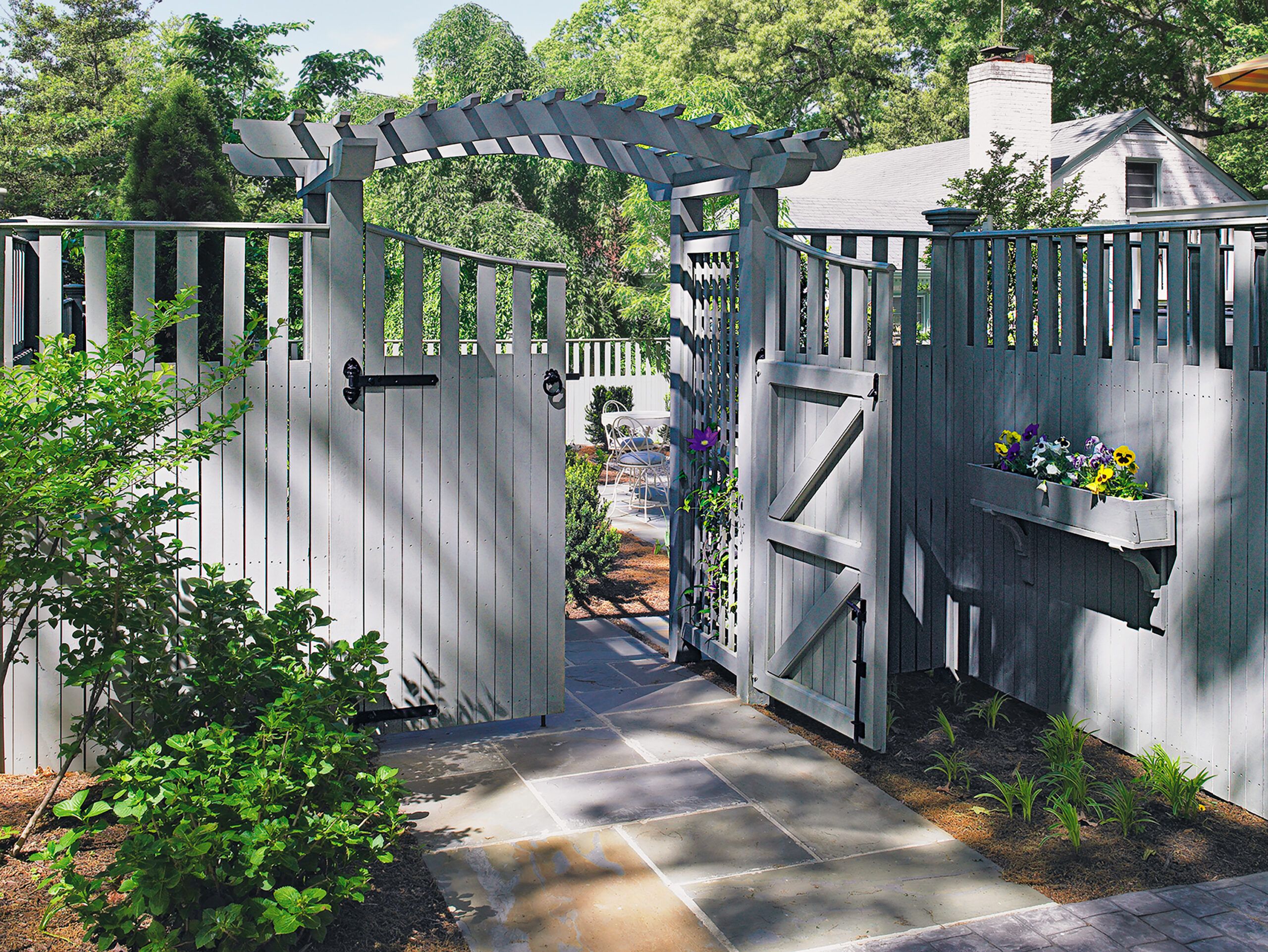
Fences and walls are remain popular choices for creating immediate privacy, especially for newly installed pools, patios, and playgrounds. A 6-foot solid board fence can quickly establish a private space, but check local building codes regarding fence heights and any other restrictions.
While fences are practical, landscape architect Eric Sauer notes, “A privacy fence might solve the problem, but it’s not always the most aesthetically pleasing solution.” Here are some ways to improve the appearance of a board fence:
- Add an open lattice or baluster top to break up the solid mass.
- Incorporate climbing plants to add texture and color to the fence surface.
- Plant flowering or evergreen shrubs in front to soften the fence’s appearance.
- Paint or stain the fence to complement your home’s exterior.
- Use a combination of materials, such as wood and stone, for a more custom look.
6. Stone Wall Topped with Fencing
Combining a stone wall with fencing creates a robust and visually appealing privacy solution. This involves building a 2- or 3-foot stone wall and topping it with a 3- or 4-foot lattice or picket fence. The stone base provides a solid foundation and adds an element of permanence to the structure, while the open-work fence on top maintains airflow and prevents a claustrophobic feel.
When planning a stone wall with fencing, consider these factors:
- Check for proper drainage behind the wall to prevent water buildup and potential damage.
- Choose stones that complement your home’s architecture and landscape style.
- Consider incorporating built-in planters or seating areas into the wall design.
- Select a fence style that balances privacy needs with style preferences.
- Use landscape lighting to highlight the wall and fence at night, adding depth to your outdoor space.
7. Masonry Walls with Ornamental Ironwork
Masonry walls of stone or stucco can provide substantial privacy while maintaining an open feel when designed with decorative elements. A 5- or 6-foot high wall can incorporate windows or openings fitted with ornamental ironwork, adding visual interest and allowing for controlled views and air circulation.
Landscape designer Michael Glassman suggests searching garage sales for unique ironwork pieces to incorporate into privacy designs. “As opposed to new ironwork, which can look generic, salvage has an old look that gives more permanence to the landscape,” he says. Glassman often repurposes cast-iron sections as trellises for vines, securing them to the side of a house with brackets.
Here’s how to create an effective masonry wall with ornamental ironwork:
- Choose ironwork patterns that match your overall design theme.
- Consider incorporating climbing plants to soften the wall’s appearance.
- Design the wall to complement your home’s architectural style.
- Use lighting to highlight the ironwork and create interesting shadows at night.
- Vary the placement and size of openings to create visual rhythm.
8. Panels and Pergolas
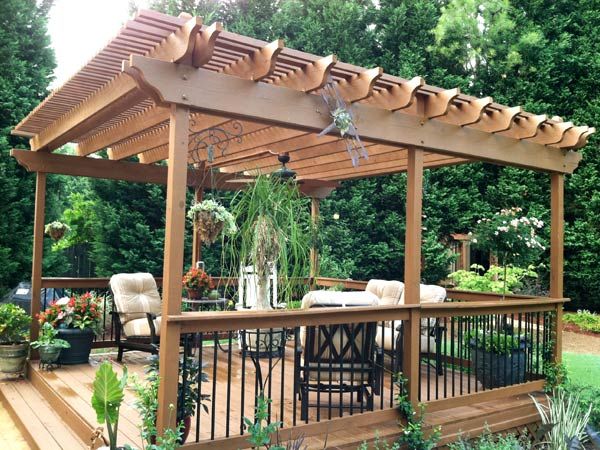
Enclosures can create intimate spaces that feel like outdoor rooms for more defined areas such as small patios, outdoor kitchens, and decks. These structures provide privacy while still allowing you to enjoy the beauty of your surroundings.
Enclosure options include the following:
- Custom-built wooden structures with adjustable privacy screens
- Fixed lattice panels along two sides of a raised deck
- Modern metal and glass enclosures for a sleek, contemporary look
- Prefabricated iron gazebos surrounded by potted plants and hanging baskets
- Slatted-top wooden pergolas covered with climbing vines
When designing an enclosure, consider factors such as sun exposure, prevailing winds, and desired views to create a comfortable and functional space. Incorporate lighting and perhaps outdoor curtains or retractable shades for added flexibility in controlling privacy and ambiance.
9. Lattice, Wood Panels, and Ornamental Ironwork
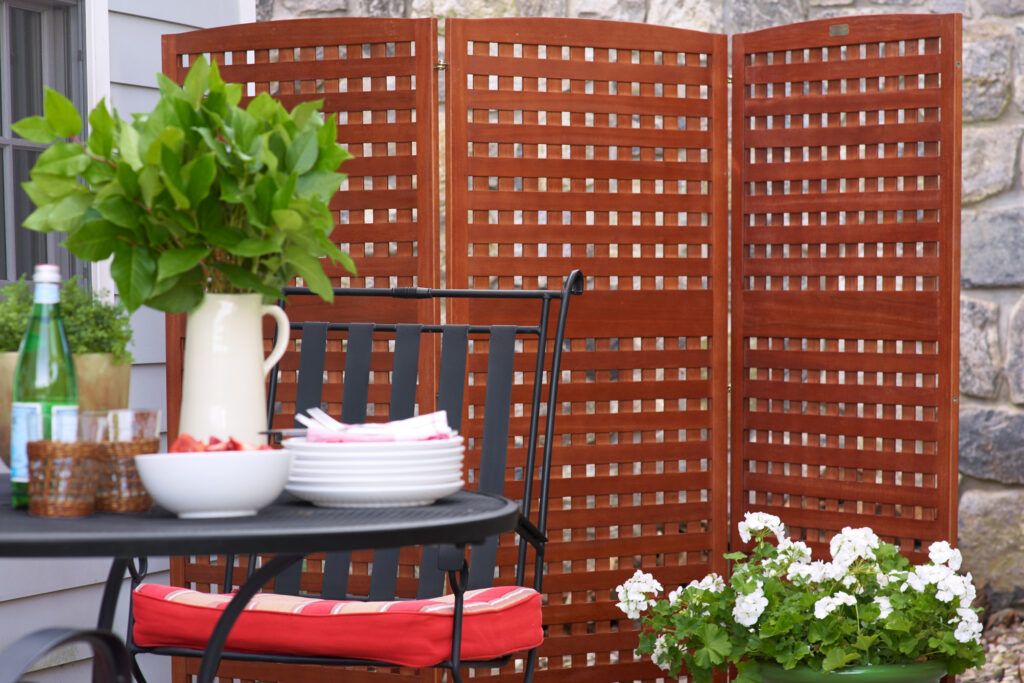
Screens made from lattice, louvered wood panels or sections of ornamental iron offer versatile privacy solutions that can be easily customized to fit your space and style preferences. These structures can create cozy corners or U-shaped enclosures that preserve desirable views while blocking unwanted sightlines.
While these semitransparent structures may not provide complete privacy, they allow natural light and breezes to pass through.
For maximum flexibility, consider these options:
- Add climbing plants to increase privacy and create a living screen.
- Choose materials and designs that complement your home’s architecture.
- Incorporate gravel or concrete plugs in the planter feet for added stability.
- Use a combination of different screen types to create visual interest and varied levels of privacy.
- Use posts with lightweight planters on wheels for movable screens.
10. Using Fountains to Mask Noise
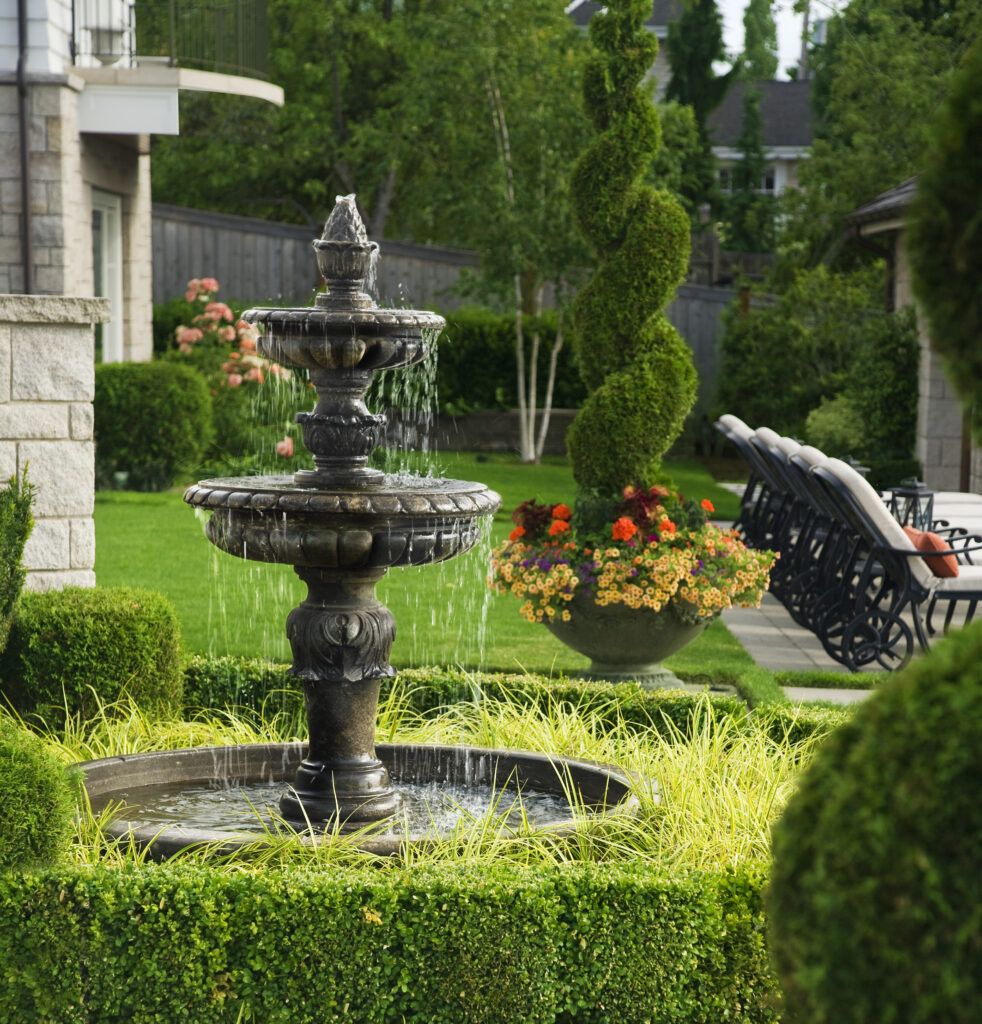
While visual privacy is often the primary concern, auditory privacy can be equally important in creating a peaceful backyard. Fountains can effectively mask unwanted sounds from neighbors or nearby traffic while adding a soothing element to your outdoor space.
When incorporating a fountain to mask noise, take the following steps:
- Choose a design that complements your landscape style.
- Consider the sound level carefully. It should be pleasant, not overwhelming.
- Incorporate lighting to create an attractive focal point at night.
- Opt for adjustable pumps to control water flow and sound intensity.
- Position the fountain strategically to maximize its noise-masking effect.
Glassman advises caution when selecting fountain volume, saying, “The sound of rushing water might be inviting when guests arrive, but you don’t want to have to yell over the din at dinner.”
Backyard Privacy Ideas: Our Conclusion
Creating privacy in your backyard doesn’t have to mean erecting tall fences or feeling closed in. With these diverse approaches, you can create a secluded outdoor space that suits your style and needs.
